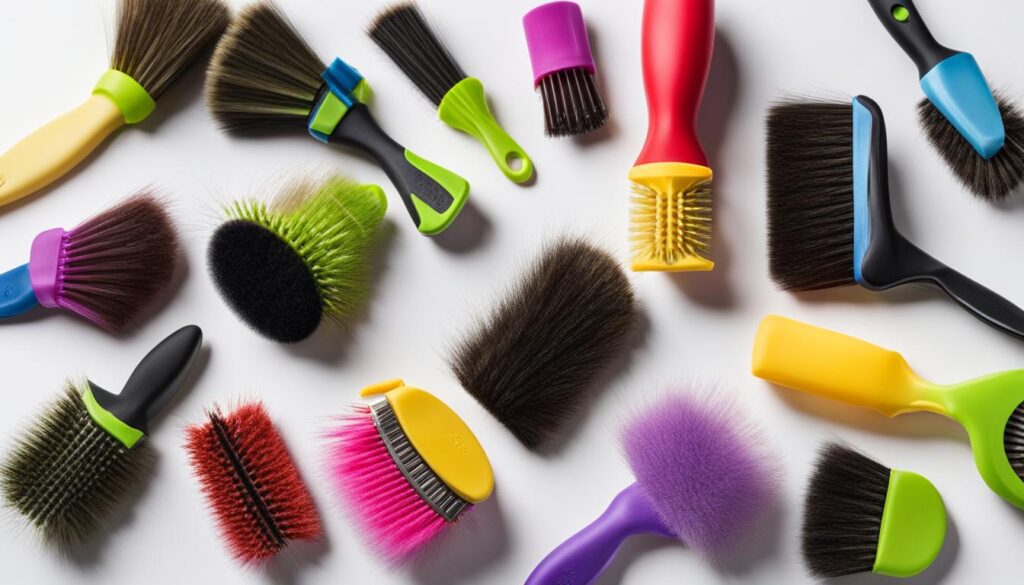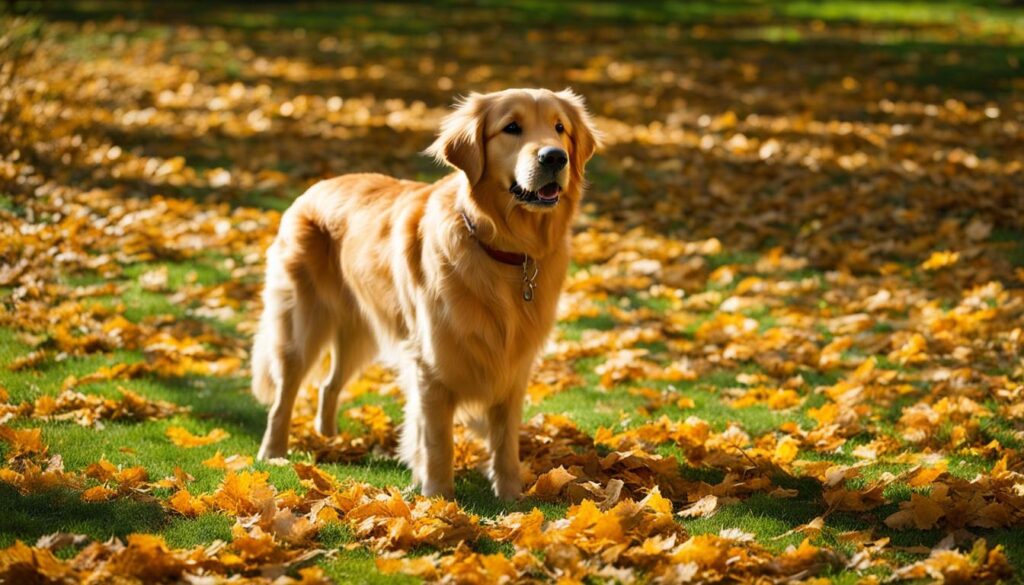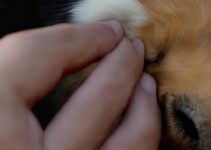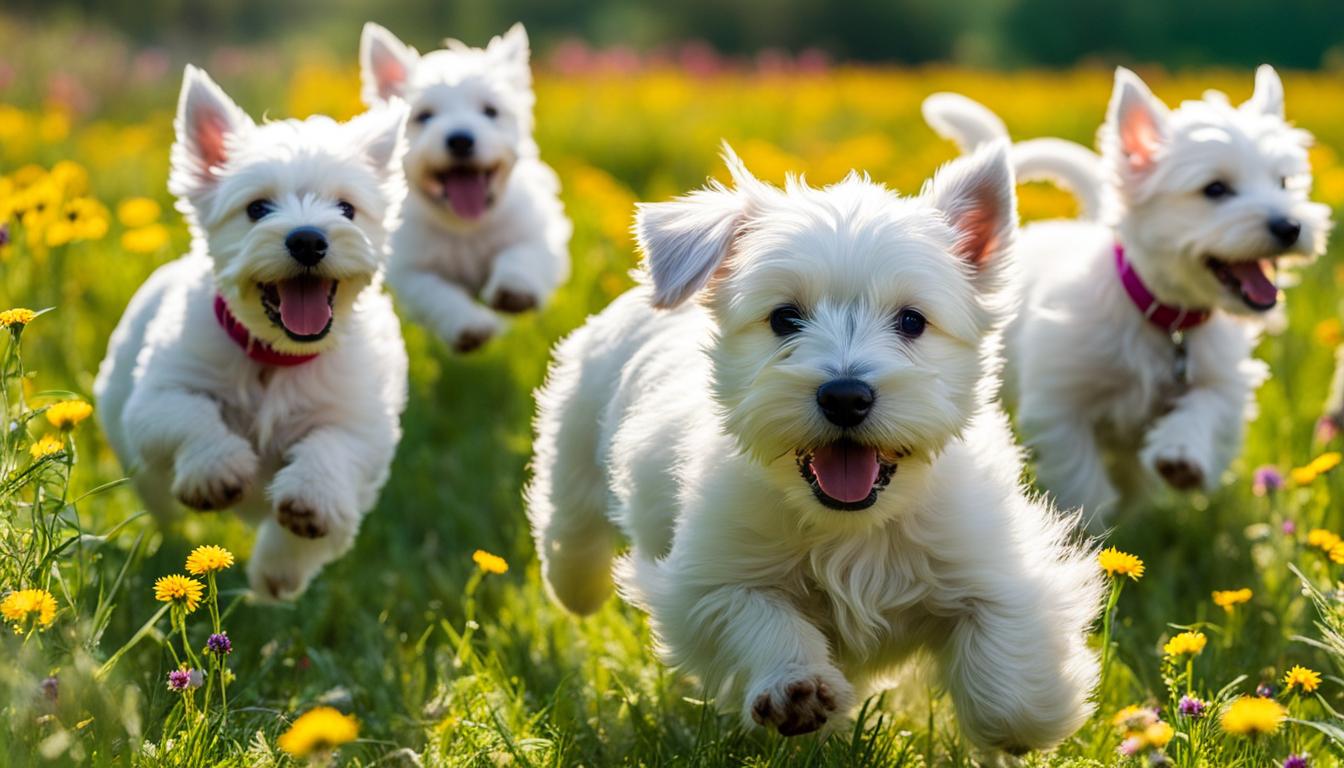Shedding is a natural process for dogs, but it can be frustrating for pet owners. Understanding the causes of shedding and how to manage it is essential. Factors such as breed, weather conditions, diet, and allergies can affect the frequency and amount of shedding. However, there are effective ways to reduce shedding through grooming and proper diet.
Key Takeaways:
- Proper grooming and a healthy diet are crucial for managing shedding in dogs.
- Choosing a breed that sheds less can help minimize shedding.
- Regular veterinary care is important to address any underlying health issues that may contribute to excessive shedding.
- Regular cleaning and using designated pet blankets or furniture covers can help control shedding in your home.
- Remember that shedding is a natural process and cannot be completely eliminated, but it can be significantly reduced with the right approach.
Choosing a Breed That Sheds Less
When it comes to managing shedding in dogs, choosing a breed that sheds less can make a significant difference. Some breeds naturally shed more than others, so it’s important to consider your household’s shedding needs and any allergies you or your family members may have. While no dog breed is completely hypoallergenic, certain breeds are known to shed less and may be a better fit for those looking to minimize shedding.
Here are a few breeds that are known for their low shedding:
Afghan Hounds
Afghan Hounds have a beautiful, long coat that requires regular grooming, but they shed very little. This makes them a great option for those looking for a low-shedding breed.
Poodles
Poodles are often considered a hypoallergenic breed because they have hair instead of fur. They shed minimally and are a popular choice for individuals with allergies.
Irish Water Spaniels
Irish Water Spaniels have a thick, curly coat that doesn’t shed much. Regular grooming is still necessary to keep their coat healthy, but their shedding is minimal.
Portuguese Water Dogs
Portuguese Water Dogs have a non-shedding coat that requires regular grooming to prevent matting. Their coat texture makes them a great choice for those looking to minimize shedding.
It’s important to note that shedding can still vary among individual dogs within a breed. While these breeds are generally known for shedding less, it’s always a good idea to spend time with the specific dog you’re interested in before making a decision. Additionally, regular grooming, diet, and proper care can help minimize shedding and keep your dog’s coat healthy.
The Importance of Proper Grooming
Grooming plays a vital role in managing shedding in dogs. Regular grooming sessions not only keep your dog’s coat healthy but also help to minimize the amount of loose hair in your home. One essential aspect of grooming is selecting the right brush for your dog’s coat type. Different breeds and coat textures require specific types of brushes to effectively remove dead hair and prevent matting.
Choosing the Right Brush
When it comes to dog shedding brushes, there are several options available:
- Bristle brushes are perfect for dogs with short, smooth coats.
- Wire-pin brushes work well for medium to long-haired dogs, helping to remove tangles and prevent matting.
- Slicker brushes are ideal for breeds with thick or curly hair. They effectively remove loose hair and help detangle the coat.
- Combs are useful for dogs with long, flowing hair or those prone to tangling. They help remove small mats and keep the coat looking neat.
In addition to regular brushing, investing in shedding tools designed to remove dead hair from the undercoat can be highly beneficial. These tools, such as deshedding rakes or FURminators, effectively remove loose hair before it ends up all over your furniture and floors.

While grooming is essential for managing shedding, it’s important to remember that excessive brushing or using the wrong type of brush can damage your dog’s coat. Be gentle and use a brush appropriate for your dog’s specific needs to ensure a pleasant grooming experience for both you and your furry friend.
The Role of Diet in Reducing Shedding
Proper nutrition plays a crucial role in managing excessive shedding in dogs. A well-balanced diet ensures that your furry friend receives all the necessary nutrients for healthy hair growth and maintenance. One key nutrient to focus on is omega-3 fatty acids, which can be found in fish oil or supplements specifically designed for dogs. Omega-3 fatty acids promote healthy skin and coat, reducing shedding and improving the overall health of your dog.
In addition to omega-3 fatty acids, it’s important to provide your dog with a diet that contains high-quality protein. Protein is essential for the growth and strength of hair follicles, helping to reduce shedding. Look for dog food that lists real meat as the first ingredient, as this ensures your dog is getting the necessary protein.
Feeding Your Pet a Balanced Diet
When selecting a dog food, avoid those that contain artificial additives, fillers, and by-products. These ingredients provide little nutritional value and can contribute to unhealthy skin and excessive shedding. Instead, opt for dog food that is free from these additives and contains a balance of protein, healthy fats, carbohydrates, vitamins, and minerals.
It’s also important to note that some dogs may have specific dietary needs or allergies that can contribute to shedding. If you suspect that your dog’s shedding is related to their diet, consider consulting with your veterinarian. They can provide guidance on the best diet plan for your dog’s specific needs and help identify any potential food allergies or sensitivities.
Hydration and Reducing Hair Loss
In addition to a balanced diet, proper hydration is crucial for reducing shedding in dogs. Ensure that your furry friend always has access to clean, fresh water. Adequate hydration helps maintain healthy skin and prevents excessive hair loss. If you notice that your dog isn’t drinking enough water, try adding a bit of low-sodium broth to their water bowl to encourage them to drink more.
Remember, managing shedding through diet alone may not completely eliminate the issue, as shedding is a natural process for dogs. However, providing your dog with a nutritious diet that promotes healthy skin and coat can significantly reduce shedding and contribute to their overall well-being.
Visiting the Veterinarian for Excessive Shedding
Excessive shedding in dogs can be a cause for concern and may indicate an underlying health issue. If you notice that your dog is experiencing exceptional hair loss or shedding in patches, it is important to consult a veterinarian for a thorough checkup.
A veterinarian will be able to assess your dog’s overall health and examine for any signs of parasites, infections, allergies, or hormonal imbalances that may be contributing to the excessive shedding. They may conduct diagnostic tests or recommend further examinations to determine the underlying cause.
Once the underlying issue is identified, your veterinarian will develop a treatment plan tailored to your dog’s specific needs. This may include medication, dietary changes, or other therapies to address the underlying condition and reduce shedding. Regular follow-up visits with the veterinarian are crucial to monitor your dog’s progress and make any necessary adjustments to the treatment plan.
Preventing Excessive Dog Shedding
To help prevent excessive shedding in dogs, it is important to keep up with routine veterinary care. Regular vaccinations, parasite prevention, and annual check-ups can help maintain your dog’s overall health and minimize the risk of shedding caused by preventable conditions.
Additionally, implementing a balanced diet and providing your dog with proper nutrition is essential. Consult with your veterinarian to ensure your dog is receiving a diet that is appropriate for their age, breed, and specific dietary needs.
The Benefits of Regular Grooming
Grooming plays a crucial role in managing shedding in dogs and offers numerous benefits for both you and your furry companion. Regular grooming sessions not only help control shedding but also provide an opportunity to bond with your dog and ensure their coat remains healthy and free of loose hair.
During grooming, it’s essential to choose the right tools for your dog’s coat type. Bristle brushes, wire-pin brushes, slicker brushes, and combs are some of the options available. These tools help remove dead hair and prevent it from accumulating in your home. Additionally, using shedding tools designed specifically for the undercoat can effectively reduce shedding.
While grooming, take the opportunity to inspect your dog’s coat for any cuts, bumps, or skin issues that may require veterinary attention. By catching these issues early on, you can ensure prompt treatment and prevent any further complications. Following the grooming session with an activity such as a walk or play session can further strengthen the bond between you and your dog.
Regular grooming, along with proper diet and veterinary care, is key to maintaining a healthy coat and minimizing shedding in dogs. Make grooming a part of your routine, and you’ll enjoy a clean and well-groomed pup, while your dog benefits from a healthy and comfortable coat.
Tips and Tricks for Minimizing Shedding
If you’re a dog owner dealing with excessive shedding, there are several tips and tricks you can try to minimize the amount of loose hair in your home. Along with regular grooming and a proper diet, these strategies can help control shedding and keep your dog’s coat healthy.
Keep Your Home Clean
Regularly cleaning your home is essential for reducing shedding. Vacuuming your floors and furniture, dusting surfaces, and using lint rollers can help remove loose hair and prevent it from accumulating. Pay special attention to areas where your dog spends most of their time, such as their bed or favorite spot on the couch.
Use Pet Blankets and Furniture Covers
To contain shedding, consider using designated pet blankets or furniture covers. These can help protect your upholstery and make it easier to clean up any loose hair. Opt for materials that are easy to wash and maintain, so you can easily remove any accumulated hair.
Invest in Air Filters
If allergies are a concern in your household, using air filters can help reduce the presence of allergens, including dog hair, in the environment. Look for filters specifically designed to capture pet dander and hair. Additionally, regular vacuuming with a pet-friendly vacuum cleaner can help eliminate allergens from your carpets and rugs.
By implementing these tips and tricks, you can effectively minimize shedding and create a cleaner, more comfortable living space for both you and your furry friend.

The Reality of Shedding in Dogs
Shedding is a natural process that all dogs go through, and it’s important for pet owners to understand this reality. While shedding cannot be completely stopped, there are ways to reduce and control it. Consistency and regular maintenance are key to maintaining a healthy coat and minimizing the amount of loose hair in your home.
It’s important to note that different breeds have varying shedding patterns, so choosing a breed that sheds less can make a significant difference. Additionally, proper grooming plays a crucial role in managing shedding. Regular brushing with suitable tools can help remove dead hair and keep the coat healthy. Remember to choose the right brush for your dog’s coat type to ensure effective grooming.
Diet also plays a significant role in reducing shedding. Providing your dog with a balanced and nutritious diet can promote healthy hair growth and minimize excessive shedding. Omega-3 fatty acid supplements can further support healthy hair growth and overall well-being. It’s essential to consult with a veterinarian to determine the best diet and supplements for your dog.
Controlling Dog Shedding
While shedding is a natural process, excessive shedding may be a sign of an underlying health issue. If your dog experiences exceptional hair loss or hair loss in patches, it’s crucial to seek veterinary care. Addressing any underlying health issues can help reduce shedding and ensure your dog’s overall well-being.
Remember, shedding is a normal part of a dog’s life, and it cannot be completely eliminated. However, by understanding the causes of shedding and implementing proper grooming, diet, and veterinary care, you can successfully control and minimize shedding, keeping your dog’s coat healthy and your home free from excessive loose hair.
Conclusion
In conclusion, managing dog shedding is possible through a combination of grooming, diet, and regular veterinary care. By following these tips and tricks, you can significantly reduce the amount of shed hair in your home and keep your dog’s coat healthy.
One of the first steps is to choose a breed that sheds less. Additionally, using the right grooming tools, such as shedding brushes and combs, can help remove dead hair and prevent excessive shedding. A healthy diet rich in nutrients, including omega-3 fatty acids, can also promote healthy hair growth and minimize shedding.
It’s important to address any underlying health issues that may be causing excessive shedding. Regular visits to the veterinarian can help identify and treat these issues. However, it’s important to remember that shedding is a natural process and cannot be completely eliminated.
Overall, with consistency and regular maintenance, you can effectively reduce dog shedding and keep your furry friend comfortable and happy. So, try out these dog shedding remedies and enjoy a cleaner and healthier home!
FAQ
What are the best things for shedding dogs?
Proper grooming, a healthy diet, and regular veterinary care are essential for managing shedding in dogs.
How can I reduce dog shedding?
Regular grooming, using the right brushes, providing a balanced diet, and addressing any underlying health issues can help minimize shedding in dogs.
How do I choose a breed that sheds less?
Some breeds are known for shedding less, such as Afghan Hounds, Poodles, Irish Water Spaniels, and Portuguese Water Dogs. However, individual dogs within a breed may vary in their shedding patterns.
What is the importance of proper grooming?
Regular grooming sessions help control shedding, maintain a healthy coat, and provide an opportunity to check for any skin issues or injuries.
How does diet play a role in reducing shedding?
Feeding your dog a complete and balanced diet ensures they receive the necessary nutrients for healthy hair growth. Omega-3 fatty acid supplements can also promote healthy hair growth.
What should I do if my dog is experiencing excessive shedding?
Excessive shedding can sometimes be a sign of an underlying health condition. It’s advisable to consult a veterinarian for a thorough checkup and appropriate treatment.
What are the benefits of regular grooming?
Regular grooming not only helps control shedding but also strengthens the bond between you and your dog. It also allows for the detection of any skin issues or injuries that may require veterinary attention.
What are some tips and tricks for minimizing shedding?
Regularly cleaning your home, using designated pet blankets or furniture covers, and using air filters or regularly vacuuming can help reduce shedding and allergens in the environment.
Is it possible to completely stop shedding in dogs?
Shedding is a natural process for dogs and cannot be completely stopped. However, with the right approach, shedding can be greatly reduced and managed.



